-
Geoengineering technique would not stop sea level rise

Researchers used computer model experiments to test how the Greenland Ice Sheet would react to albedo modification, also called solar radiation management geoengineering, a proposed technology to cool down the Earth’s temperature by reflecting some sunlight away from the planet. They found the ice sheet might contribute to sea-level rise for decades to centuries after albedo modification began. The researchers say that albedo modification should not be counted on as a short-term solution to stop rising global sea levels.
-
-
Up to 30 percent less precipitation in the Central Andes in future
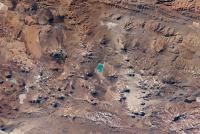
Seasonal water shortages already occur in the Central Andes of Peru and Bolivia. By the end of the century, precipitation could fall by up to 30 percent according to an international team of researchers. Researchers show that precipitation in the rainy season could drop noticeably - and this could happen within the next twenty years.
-
-
Worries grow about rain-induced toxic chemical clouds from destroyed Chinese facility
China’s state-run news agency has reported that the warehouse where last Wednesday’s powerful explosions in the Chinese city of Tianjin originated, received a license to handle hazardous chemicals only two months before the disaster. The official count now stands at 114 dead, 700 injured, and 53 missing. Most of the dead, injured, and missing are firefighters. Officials said that more than forty different types of chemicals have now been discovered at the blast site, including 700 tons of sodium cyanide, 800 tons of ammonium nitrate, and 500 tons of potassium nitrate. Chemical engineers said that the heavy rains which began to fall on the city Monday night set off more chemical reactions, creating clouds of toxic gas which would waft over residential areas – some of them less than a mile from the destroyed chemical facility – and hobble rescue and recovery work.
-
-
Warming-driven substantial glacier ice loss in Central Asia imperils water supplies
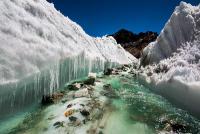
Central Asia is the outstanding case for human dependence on water seasonally delayed by glaciers. Nowhere the question about the glacier state is linked so closely to questions of water availability and, thus, food security. The glaciers in Central Asia, however, experience substantial losses in glacier mass and area. Along the Tien Shan, Central Asia’s largest mountain range, glaciers have lost 27 percent of their mass and 18 percent of their area during the last fifty years. Scientists estimate that almost 3,000 square kilometers of glaciers and an average of 5.4 gigatons of ice per year have been lost since the 1960s, saying that about half of Tien Shan’s glacier volume could be depleted by the 2050s.
-
-
Sodium cyanide stored at explosion site pollutes city’s water
The Chinese government says that 114 people, most of them firefighters, have been killed and ninety-five still missing after first responders were sent to the Tianjin chemical plant to fight large fires which broke out after a powerful explosion at the plant last Wednesday. Chinese officials say they found 700 tons of sodium cyanide at two locations at the site. Chinese public health officials said on Monday that the health risks of last week’s explosion are spreading, reporting that alarming levels of sodium cyanide have been found at wastewater monitoring stations in and around the city of Tianjin.
-
-
Toxic blue-green algae a growing threat to nation’s drinking, recreational water
A new report concludes that blooms of toxic cyanobacteria, or blue-green algae, are a poorly monitored and underappreciated risk to recreational and drinking water quality in the United States, and may increasingly pose a global health threat. Several factors are contributing to the concern. Temperatures and carbon dioxide levels have risen, many rivers have been dammed worldwide, and wastewater nutrients or agricultural fertilizers in various situations can cause problems in rivers, lakes, and reservoirs.
-
-
Three new Engineering Research Centers to advance U.S. resiliency, sustainability

The NSF awards $55.5 million for compact mobile power, off-grid water treatment, and nature-inspired soil engineering. The NSF says that innovations that improve the affordability, availability, quality, and resilience of infrastructure services will enhance the nation’s economic competitiveness and societal well-being.
-
-
Price of wind energy in U.S. at an all-time low, spurring demand
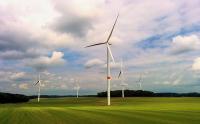
Wind energy pricing is at an all-time low, according to a new report released by the U.S. Department of Energy. The prices offered by wind projects to utility purchasers averaged under 2.5¢/kWh for projects negotiating contracts in 2014, spurring demand for wind energy.
-
-
Cars to harvest energy from bumps in the road
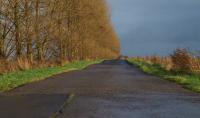
The 255 million cars on the road in the United States account for 40 percent of the country’s fuel consumption. Most of that fuel is wasted. Engineers may have a partial solution: harvesting energy from the car’s suspension. Only 10 to 16 percent of the fuel a car consumes is actually used to drive — that is, to overcome road resistance and air drag. Most of the rest is lost to heat and other inefficiencies. With clever engineering, however, that deficit can be reduced. Three major opportunities exist for recovering or generating energy while driving: the waste heat given off by the engine, the kinetic energy absorbed during braking, and the vibrational energy dampened by the shock absorbers.
-
-
Tackling urban water crises

With drought conditions putting a strain on resources throughout South Florida, FIU researchers are investigating long-term solutions to water crises as part of a newly launched consortium. The Urban Water Innovation Network (UWIN) comprises fourteen academic institutions and key partners across the United States. The UWIN researchers hope to create technological, institutional, and management solutions that will help communities increase the resilience of their water systems and enhance preparedness for responding to water crises.
-
-
Building resilient urban infrastructure to cope with climate challenges
In addition to urban flooding, global climate change is predicted to bring increased coastal flooding, like that associated with Hurricane Katrina and Superstorm Sandy, as well as extreme heat. As extreme weather events like these occur more frequently, global climate change may demand that we recalibrate our definition of “rare.” Historically, infrastructure to mitigate flooding and extreme heat has been designed to be fail-safe, meaning that it is designed to be fail-proof. But recently we have seen that fail-safe can be a dangerous illusion. Fifty researchers from different disciplines from fifteen institutions have teamed up to explore these challenges and to change the way we think about urban infrastructure.
-
-
Smart hand pumps to bring a reliable water service to rural Africa
Worldwide 780 million people live without basic and reliable water supplies, with parts of rural Africa facing particular challenges achieving water security. Groundwater from hand pumps is a primary water supply for many communities — but up to one third of these pumps are out of action at any one time and can take weeks to be repaired. Researchers have created a device that generates data on hand pump usage and transmits this information over the mobile phone network. The smart hand pump, being trialed in rural Kenya, alerts the maintenance team if the hand pump is not functioning.
-
-
$4 million awarded to support earthquake early warning system in Pacific Northwest
The U.S. Geological Survey (USGS) last week has awarded approximately $4 million to four universities — California Institute of Technology, University of California, Berkeley, University of Washington, and University of Oregon — to support transitioning the ShakeAlert earthquake early warning (EEW) system toward a production stage. A functioning early warning system can give people a precious few seconds to stop what they are doing and take precautions before the severe shaking waves from an earthquake arrive.
-
-
Confronting weather extremes by making infrastructure more resilient
South Florida’s predisposition to weather extremes renders the region’s infrastructure acutely vulnerable. But weather extremes are not exclusive to South Florida. The Urban Resilience to Extreme Weather-Related Events Sustainability Research Network (UREx SRN), a newly formed team of researchers, is addressing these challenges on an international scale.
-
-
Forecasting tool reduces costly power grid errors
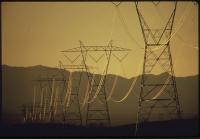
Accurately forecasting future electricity needs is tricky, with sudden weather changes and other variables impacting projections minute by minute. Errors can have grave repercussions, from blackouts to high market costs. Now, a new forecasting tool that delivers up to a 50 percent increase in accuracy and the potential to save millions in wasted energy costs has been developed by researchers.
-
More headlines
The long view
Water Wars: A Historic Agreement Between Mexico and US Is Ramping Up Border Tension
As climate change drives rising temperatures and changes in rainfall, Mexico and the US are in the middle of a conflict over water, putting an additional strain on their relationship. Partly due to constant droughts, Mexico has struggled to maintain its water deliveries for much of the last 25 years, deliveries to which it is obligated by a 1944 water-sharing agreement between the two countries.
Trump Is Fast-Tracking New Coal Mines — Even When They Don’t Make Economic Sense
In Appalachian Tennessee, mines shut down and couldn’t pay their debts. Now a new one is opening under the guise of an “energy emergency.”
Smaller Nuclear Reactors Spark Renewed Interest in a Once-Shunned Energy Source
In the past two years, half the states have taken action to promote nuclear power, from creating nuclear task forces to integrating nuclear into long-term energy plans.
Keeping the Lights on with Nuclear Waste: Radiochemistry Transforms Nuclear Waste into Strategic Materials
How UNLV radiochemistry is pioneering the future of energy in the Southwest by salvaging strategic materials from nuclear dumps –and making it safe.
Model Predicts Long-Term Effects of Nuclear Waste on Underground Disposal Systems
The simulations matched results from an underground lab experiment in Switzerland, suggesting modeling could be used to validate the safety of nuclear disposal sites.
